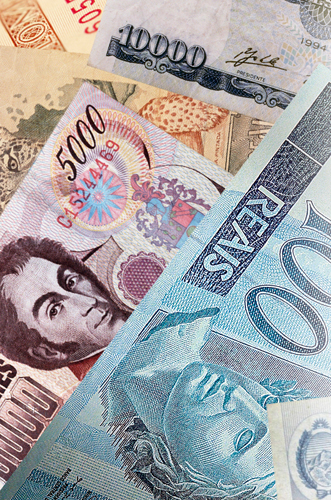Country Profiles
South America is an important region for business, but it is not yet so integrated that you can apply a uniform strategy. Consider your options country by country. The five largest economies that are open to global business are highlighted here. But don’t neglect to investigate some of the smaller countries that might match a particular focus of your strategy.

Brazil
Brazil is the largest country in the region in terms of area, population, and economy. It is ranked as the world’s 10th largest economy by the International Monetary Fund and the World Bank. Its economy spans agriculture, mining, industry, and technological services as well as a large pool of labor. Brazilian exports are booming, creating a new generation of tycoons. Major export products include aircraft, coffee, automobiles, steel, ethanol, and electrical equipment. Brazil is regarded as one of the four fastest emerging economies alongside Russia, India, and China.
Capital/largest city: Brasília/São Paulo
Population: 200 million
Official language: Portuguese
GDP/GDP per capita: $1.7 billion (2008)/$10,100 (purchasing power parity)
Currency: I real (BRL) = 100 centavos
Time zone: UTC -2 to -4
Dialing code: +55
Principal business areas: São Paulo, Rio de Janeiro, Campinas, Porto Alegre
Chile
Chile is one of South America’s most stable nations. Business-friendly government policies drive the economy. Chile’s economy is split almost evenly between industry and services, with agriculture a distant third. Important sectors include aircraft manufacture, copper, mining, and financial services.
Capital/largest city: Santiago/Santiago
Population: 17 million
GDP/GDP per capita: $181 billion (2008)/$14,700 (purchasing power parity)
Currency: 1 peso (CLP) = 100 centavos
Time zone: UTC -4
Principal business areas: Santiago, Valparaíso
Argentina
Manufacturing is the nation’s largest sector, especially in the areas of food processing, chemicals, and machine and automotive parts. Argentina is also one of the world’s major agricultural producers, with soy farming, beef and dairy herds, and sheep farming as significant contributors to the economy.
Capital/largest city: Buenos Aires/Buenos Aires
Population: 40 million
GDP/GDP per capita: $339 billion (2008)/$14,400 (purchasing power parity)
Currency: 1 peso (ARS) = 100 centavos
Time zone: UTC -3
Principal business areas: Buenos Aires, Córdoba, Rosario, Mendoza

Peru
Peru’s economy is largely based on services, which account for over half of its GDP. Other important contributors are mining and the processing of metals and fossil fuels, and automotive manufacture. Peru’s main exports are copper, gold, zinc, textiles, and fish meal.
Capital/largest city: Lima/Lima
Population: 30 million
GDP/GDP per capita: $107 billion (2008)/$7,800 (purchasing power parity)
Currency: 1 nuevo sol (PEN) = 100 céntimos
Time zone: UTC -5
Principal business areas: Lima, Cajamarca, Ica, Cuzco
Colombia
The Colombian economy has one of the highest growth rates in South America, reaching 8.2 percent in 2007. Its main industries are agriculture—largely coffee—and mining—mostly coal, petroleum products, and gold. Tourism is also increasingly important to the Colombian economy.
Capital/largest city: Bogotá/Bogotá
Population: 46 million
GDP/GDP per capita: $202 billion (2008)/$8,000 (purchasing power parity)
Currency: 1 peso (COP) = 100 centavos
Time zone: UTC -5
Principal business areas: Bogotá, Medellín, Santiago de Cali
